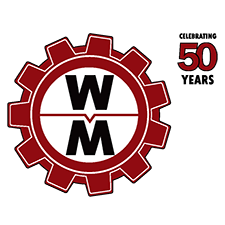 Is your old press brake on its last legs? Is it time to invest in a new machine to handle your shop’s changing needs? Today’s owners and operators find themselves faced with a variety of options – including different types of press brakes, tonnages, and tooling combinations. With all the choices available, it’s important you understand your options and make the choice that’s right for your needs.
Is your old press brake on its last legs? Is it time to invest in a new machine to handle your shop’s changing needs? Today’s owners and operators find themselves faced with a variety of options – including different types of press brakes, tonnages, and tooling combinations. With all the choices available, it’s important you understand your options and make the choice that’s right for your needs.
Keep these three tips in mind when you’re looking for your next press brake:
1. Understand the Types of Press Brakes Available to You
When shopping around for a new press brake, you need to determine the kind that will be right for your shop – whether mechanical, servo, electric, hydraulic, CNC, or combination.
The two most common types of press brake on the market today are:
- Hydraulic press brakes: These types of press brakes are comparatively easy to use and designed to handle heavy workloads. If your shop works with especially thick materials, a hydraulic press brake like one from Baykal is the only way to go.
- Electronic press brakes: These machines are more energy efficient than hydraulic press brakes, are easier to maintain and fix, and are more accurate than their hydraulic counterparts. SafanDarley’s E-Brake, for example, comes in many sizes and configurations. The ergonomic model is especially suitable for small parts bending.
2. Choose the Right Tooling
The type of tooling you need will depend on the kind of materials your shop works with. In general, you should select the tooling that will give you the strongest possible tooling profile – though you need to be careful to not exceed the tooling or press brake load limits. For best results, the two load limits should be the same as each other.
If you plan on using your current tooling with your new press brake, remember to take the time to ensure it’s still compatible and in good condition. To inspect for wear, measure from nose to shoulder for punches and shoulder to shoulder for dies, keeping in mind that:
- With conventional tooling, accuracy should be roughly +/- 0.001 inch-per-foot. It shouldn’t exceed +/- 0.005 for overall length.
- For precision ground tooling, aim for accuracies of +/- 0.0004 inch-per-foot and not exceeding +/- 0.002.
3. Work with an Experienced Press Brake Supplier
It’s important to work with a supplier specializing in metal forming and fabrication machinery like press brakes. These companies will have experienced teams able to address your unique needs. They’ll also be able to provide you with value-added services including preventative maintenance programs, ongoing technical support, and a diverse inventory of replacement parts to keep your shop’s press brake running smoothly.
Westway Machinery is the Canadian leader in press brakes, proudly distributing SafanDarley electric models and Baykal hydraulic press brakes. Contact us to find out more about our products and services.
Read more:

